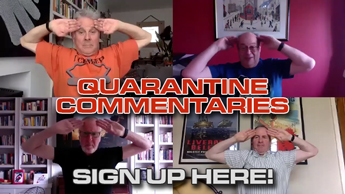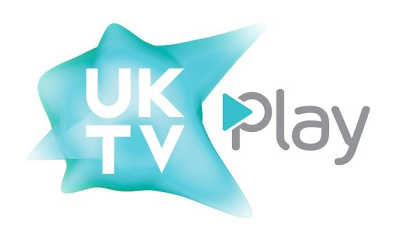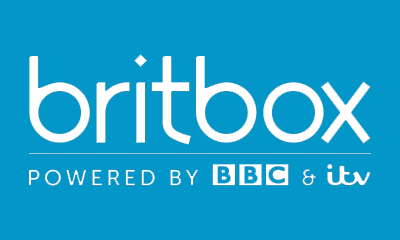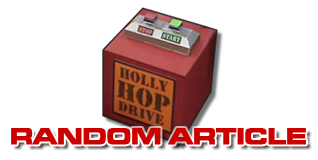 |
Inside Story Meet the man who has the real behind-the-scenes scoop on series II and III. Mr Flibble gets a-gossiping with Dwarf Production Manager and voice artist supreme, Mike Agnew. |

Andrew Ellard
With typical Flibble logic, part two started with the beginning. How did your career in TV PRODUCTION begin?
It was a strange way to start, actually, and Red Dwarf was very much near the beginning. I used to work in theatre - I was Rowan Atkinson's tour manager. We toured Australia, set up the American show, did a tour a Britain and lots of things. The first series of Red Dwarf I did [series II] was with Paul Jackson Productions. Gilly Archer and I were working, in separate directions, on the very first Comic Relief. I was production managing the theatre show, and Gilly was involved with all the filming in Somalia and Ethiopia.
She got very ill at the time, and I ended up going to Australia for Craig Goes Mad in Melbourne as the only production manager. Paul gave me a lot of books to read, and gave me a lot of information on the flight, as to how to production manage a television event, as I didn't know one end of a camera from another! It was fairly successful and I came back and did more theatre. Then Paul offered me Don't Miss Wax, Ruby Wax's series, and then we went off to do Red Dwarf.
I got on very well with Ed Bye - Ed directed Don't Miss Wax and Craig Goes Mad in Melbourne and was going on to Red Dwarf. We went off and made the second series of Red Dwarf, because the first series was made 'in-house' [by the BBC]. While we filmed the series at BBC North, it was the first time a freelance production team had come in.
You actually have a bit of an acting background as well - hence all the voice work on Red Dwarf...
In 1983 I left drama school, I was an actor for a couple of years. Stage management sort of took over. I loved going out on tour. I was in Brookside, I did a couple of commercial. Small parts.
Mr Flibble wanted to know about the glamorous LOCATIONS used for series III - including trailer facilities...
There's a power station just north of Manchester, a huge power station - so you get the big pipes and furnaces, lots of gantries and things. [There] was quite a small area that was actually in 'down time'. It was in use, but they used different areas at different times! There was a big security thing about that, and now you probably couldn't even film in a power station because security would be so tight.
Half of those scenes are in the power station, and the other half are on the gantries at the studios. You just wanted lots of steps and things. So half their journey would be on metal steps in the power station, and the other half - because in a power station you can't do an awful lot of dialogue because there's so much noise - we recreated in the studio. And the best way to do that is to go up into the grip and walk along the gantries there.
How did you find filming the BACKWARDS sequences?
Backwards was a huge logistical exercise for Ed, really; and for me. We had to shoot every scene in reverse order and know where it would be cut. I remember reading a draft of the script and thinking, 'How the hell are we going to do this?' - if only because they land on Earth. If they'd landed on, I don't know, Titan, then you can get away with it because you can do aliens and things. But arriving and shooting in Manchester city centre, going backwards...
I remember specifically doing one wide shot with Kryten and Rimmer walking though a crowd of people. It was a Saturday afternoon, we're hiding the camera so no-one's looking. Then I take Chris and Robert off and set them to walk backwards through a crowd - and look around as if they're stunned at what they're seeing. I'm in the crowd, facing them, and shouting things like, 'Old lady with trolley!' Because they can't look behind them - they had to look forwards the whole time. You don't look behind you when you're walking forwards. You can imagine the kind of people I had to deal with...

Craig, of course, had to do a backwards-walk into the lake, because he had to be dry when he came out. We filmed that at Lime Park Lake in Liverpool - we shot quite a lot in this one big park. There was a boat with a diver, because Craig had to be completely submerged. We had to throw a lot of debris out onto the lake because the ship had crash landed. Lots of stuff.
Sounds like a fun day...
That was the day that Craig and Danny disappeared for about two and a half hours. It was the closest I came to physically assaulting Craig Charles! I had to be held back by Ed...
We shot a lot of stuff in the morning - finding the sign in the road: '871 Selim to Nodnol.' We shot the bike scenes, the tandem. We wanted the sun to be on the lake for at least a little while, because the lake was freezing. We came to lunch, and our props truck had a board on the back with all the keys to the hire cars - and Craig borrowed a hire car and took Danny off with him! He went to see his sister, I think. I'm sure he only intended to disappear for the hour...
Power stations? Lakes? City centres? Not really a place for the penguin equivalent of Marlon Brando! Something posher is called for. How did you find filming up at the TIMESLIDES mansion?
That was probably the most expensive location we ever had! When you work with the National Trust, they have a set fee - and to Red Dwarf at the time it was an enormous amount of money. It was a huge logistical exercise. We could only use a certain area of the forecourt as car park. We had a limo.

Casting the driver and the bodyguard - one of them is Ed's best mate, and the other one's my best mate. Rupert Bates and Richard Ainsworth. [Rupert] also appeared as a medic at the end of Stasis Leak. He's a big fellow, and we did contemplate using him as Hudzen at one point. But Hudzen became a much bigger character, and that's why Gordon Kennedy played it.
I believe you had a bit of a career break on that episode...
Ed had been very good to me, and gave me the chance to direct. I was allowed to direct a scene of Red Dwarf with Ed over my shoulder - Timeslides, the dormitory scene with the two boys, I directed the scene with Ed's extreme supervision.
POLYMORPH featured the show's first really heavy effects. How did you find the demands of that?
Ed and I would spend nights in bars working out how the hell we could do things. Obviously, talking to people like Peter Wragg, who was doing visual effects, and John Pomphrey about lighting, and set designers about how you get around these things. There were ones where we worked out that we had to use the same lens on location as we did in the studio and mark out exact distances on the floor.
A lot of the Polymorph scenes, you take the background and chromakey the monster onto it - which is Peter Wragg with lots of levers and a hand inside... and me doing silly noises. Some bits were shot with boys in the foreground, 'real', and the bluescreen [element] put in. Other ones were shot with the boys on bluescreen and the Polymorph put in to look vast - because it wasn't as big as it looked.

Polymorph was a great episode - I enjoyed it immensely because there was an entire sequence to be shot [with the camera] locked off with a million props. It ends with a basketball having to turn a ninety-degree corner - that's worth watching. There's a handle on the set, and I had to throw the basketball by spinning it - I got it on about the second or third time; I got lucky.
You also provided the voice of the beast and other SOUND EFFECTS...
In dubbing I sat there and, every time the picture changed, I just changed my voice. [Does bizarre recreation of the polymorph noises - impossible to describe in print.] Jem [Whippey] and I would record everything on reel-to-reel tape. At that time all the noises of the ship, engines and things like that, are mostly me making gutteral noises - recorded and slowed down, re-recorded and slowed down [again].
I was hugely enthusiastic about it. I was still doing voiceovers at the time. I'm the voice of the self-destruct mechanism in Bodyswap; 'Git in Pub' in Backwards - my beer gets knocked over. I take the change out of the busker's case, too. Rob [Grant] is in that episode, smoking.
I didn't get a credit for 'Git in Pub', but I remember Rob and Doug sending me a card at the end of the series saying 'Thanks for this, this, this... and for being Git in Pub.' (Laughs) I used to have cards with my phone number saying 'GIT' - because I'd Gone Into Television.
Speaking of sound, there was no live audience at the Bodyswap recording...
We shot the whole thing with no audience. We had a rough cut - which is very loose, to leave plenty of room for laughs. Ed would tighten it in the main edit. I would do the rough garbage and he would do the art. (Laughs) At the Paris Radio Studios we showed it to an audience who laughed at it - Red Dwarf has never been made by sticking canned laughter on.
Mr Flibble wanted to know who best to... suck up to on the set. How did thing change when Rob and Doug became full PRODUCERS?
Rob and Doug were always very involved. It was their baby. They were great friends with Ed - it wasn't like they had a producer who was trying to halt them at every turn. I did more of that, in that I had to make sure it was physically done for the money we had!
The budget changed very slightly - we didn't get very much more money, but we got a little bit more for special effects. We did more model shots, so our library was getting better. They were fascinating to go and watch, because that's something I had never been involved with at all - motion-control cameras and models. Peter's models were absolutely phenomenal.
With Howard Burden coming on, the costumes changed enormously. There was a definite move away from the ship being industrial. The quarters changed, they looked less contemporary and far more futuristic. Mel [Bibby] was doing a fantastic job.
Did anything else change?
The only major change that happened was that edits became twice as long! Rob and Doug would have different ideas of how they wanted a scene to go - we'd be cutting lines, putting lines back in, wanting to shoot extra lines. It happened more than once that we were in an edit for 36 hours straight, until Ed Wooden physically couldn't do anther edit, couldn't see another join. I have to say, even at the time I loved every second of it. Just a huge amount of enthusiasm, and a great feeling of team effort.
I can remember in one sound dub, Jem and I were in the Foley area smashing each other over the head with trays, throwing things at each other to create the sound of the pub fight...which was then played backwards, of course. [We were] making a hell of a lot of noise, Ed came in and was involved as well. I was bruised, and I remember stopping and looking up and nobody was watching what we were doing, because Rob and Doug were having an argument about a line that was going into the next episode!
What have you being doing post-Red Dwarf?
I directed some stuff on BSB for Paul Jackson. I went back to floor managing for a while and got involved with The Big Breakfast - I floor managed for three months, and then I was directing it. I was also floor managing for Ed, for Ruby Wax, and for Don't Forget Your Toothbrush. I spent a long time at MTV, lots of shoots for them, and I floor managed the first MTV Music Awards. I've then gone on and, more recently, directed, produced and 'series produced' a couple of Saturday night shows for the BBC - Dog Eat Dog is mine. I'm now doing a Saturday night show with Frank Skinner for ITV.
Mr Flibble enjoyed talking to Mike Agnew, and now that it's over... Mr Flibble is very cross.














